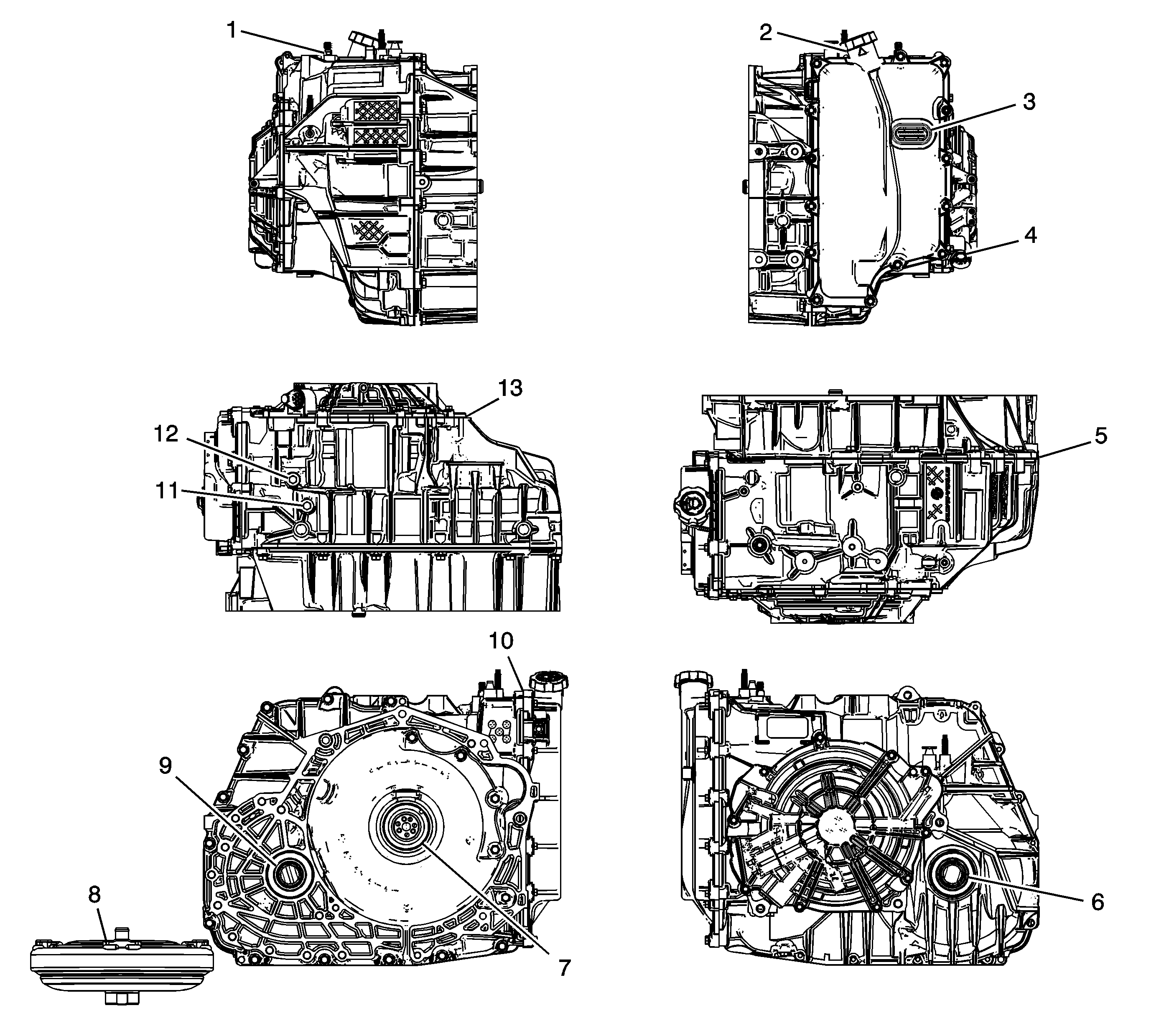General Method
- Verify that the leak is transmission fluid.
- Thoroughly clean the suspected leak area.
- Operate the vehicle for 24 km (15 mi), or until normal operating temperatures are reached.
- Park the vehicle over clean paper or cardboard.
- Shut OFF the engine.
- Look for fluid spots on the paper.
- Make the necessary repairs.
Powder Method
- Thoroughly clean the suspected leak area with solvent.
- Apply an aerosol type leak tracing powder to the suspected leak area.
- Operate the vehicle for 24 km (15 mi), or until normal operating temperatures are reached.
- Shut OFF the engine.
- Inspect the suspected leak area.
- Trace the leak path through the powder in order to find the source of the leak.
- Make the necessary repairs.
Dye and Black Light Method
A fluid dye and black light kit is available from various tool manufacturers.
- Follow the manufacturer's instructions in order to determine the amount of dye to use.
- Operate the vehicle for 24 km (15 mi) or until normal operating temperatures are reached.
- Detect the leak with the black light.
- Make the necessary repairs.
Find the Cause of the Leak
Pinpoint the leak and trace the leak back to the source. You must determine the cause of the leak in order to repair the leak properly. For example, if you replace a gasket, but the sealing flange is bent, the new gasket will not repair the leak. You must
also repair the bent flange. Before you attempt to repair a leak, check for the following conditions, and make repairs as necessary:
Gaskets
| • | Fluid level/pressure is too high |
| • | Plugged vent or drain-back holes |
| • | Improperly tightened fasteners |
| • | Dirty or damaged threads |
| • | Warped flanges or sealing surface |
| • | Scratches, burrs, or other damage to the sealing surface |
| • | Cracking or porosity of the component |
| • | Improper sealant used, where applicable |
Seals
| • | Fluid level/pressure is too high |
| • | Plugged vent or drain-back holes |
| • | Manual shaft or output shaft surface is scratched, nicked, or damaged |
| • | Loose or worn bearing causing excess seal wear |
Possible Points of Fluid Leaks
Transmission Case Cover and/or Valve Body Cover
| • | Incorrectly tightened bolts |
| • | Improperly installed or damaged gasket/seal |
Case Leak
| • | Damaged input speed sensor seal |
| • | Damaged manual shaft seal |
| • | Loose or damaged oil cooler lines/seals |
| • | Worn or damaged axle shaft oil seal |
| • | Loose line pressure pipe plug or fluid level pipe plug |
| • | Warped torque converter housing |
| • | Damaged converter housing to case seal |
Leak at the Torque Converter End
| • | Converter leak in the weld area |
| • | Converter seal lip cut. Check the converter hub for damage |
| • | Converter seal bushing moved forward and damaged |
| • | Converter seal garter spring missing from the seal |
| • | Porous casting of the torque converter housing |
Leak at the Vent
| • | Water or coolant in the fluid; The fluid will appear milky |
| • | Transmission case porous |
| • | Incorrect fluid level indicator causing an overfilled system |
Leak Inspection Points


